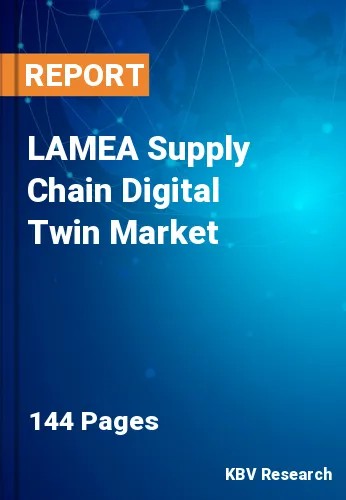The Latin America, Middle East and Africa Supply Chain Digital Twin Market would witness market growth of 14.1% CAGR during the forecast period (2023-2030).
Integrating 3D printing data into digital twins allows for optimizing additive manufacturing processes, reducing lead times and waste. In order to support the goals of the circular economy, businesses are thinking of installing SCDTs to track and manage the whole product lifecycle, from design and manufacture to recycling at the end of its useful life. Hybrid models combine physical and digital elements in the supply chain, allowing a more seamless transition between the physical and digital worlds. These models enable better real-time monitoring and decision-making. As SCDTs handle sensitive supply chain data, ensuring robust cybersecurity measures and compliance with data privacy regulations is becoming increasingly important.
Moreover, companies are exploring the concept of multi-tier digital twins, representing not only their supply chains but also those of their suppliers and customers. This holistic view enhances supply chain collaboration and risk management. Digital twin ecosystems are emerging, allowing multiple stakeholders, including suppliers, logistics providers, and customers, to collaborate within a shared digital twin environment. Advancements in predictive analytics and AI-driven insights within SCDTs enable more accurate forecasting, demand planning, and risk mitigation.
As per the data from the Foreign Agriculture Service of the United States Department of Agriculture, over the past decade, the food retail industry in the United Arab Emirates has experienced significant growth. The growth in the retail industry can be attributed to the establishing of diverse retail outlets such as hypermarkets, supermarkets, convenience stores, online retailers, and home delivery services. The increasing population in the country has driven these developments. The e-commerce food and drink sector experienced a significant growth of 25 percent in 2021, resulting in a total value of $515 million. As a result of these factors, the supply chain digital twin market in the LAMEA region will grow rapidly in the coming years.
The Brazil market dominated the LAMEA Supply Chain Digital Twin Market by Country in 2022 and would continue to be a dominant market till 2030; thereby, achieving a market value of $100.7 million by 2030. The Argentina market is showcasing a CAGR of 14.7% during (2023 - 2030). Additionally, The UAE market would register a CAGR of 13.8% during (2023 - 2030).
Based on Enterprise Size, the market is segmented into Large Enterprises and Small & Medium Size Enterprises. Based on Component, the market is segmented into Hardware, Software and Services. Based on Deployment Mode, the market is segmented into On-premise and Cloud. Based on Vertical, the market is segmented into Automotive, Aerospace & Defense, Manufacturing, Pharmaceuticals, Retail, Consumer Goods and Others. Based on countries, the market is segmented into Brazil, Argentina, UAE, Saudi Arabia, South Africa, Nigeria, and Rest of LAMEA.
Free Valuable Insights: The Worldwide Supply Chain Digital Twin Market is Projected to reach USD 5.3 Billion by 2030, at a CAGR of 11.5%
The market research report covers the analysis of key stake holders of the market. Key companies profiled in the report include IBM Corporation, Oracle Corporation, SAP SE, Dassault Systemes SE, Kinaxis, Inc., Schneider Electric SE (AVEVA Group PLC), Siemens AG (Siemens Digital Industries Software), AnyLogic North America, LLC (The AnyLogic Company), Simio LLC and Logivations GmbH.
By Enterprise Size
By Component
By Deployment Mode
By Vertical
By Country
Our team of dedicated experts can provide you with attractive expansion opportunities for your business.

